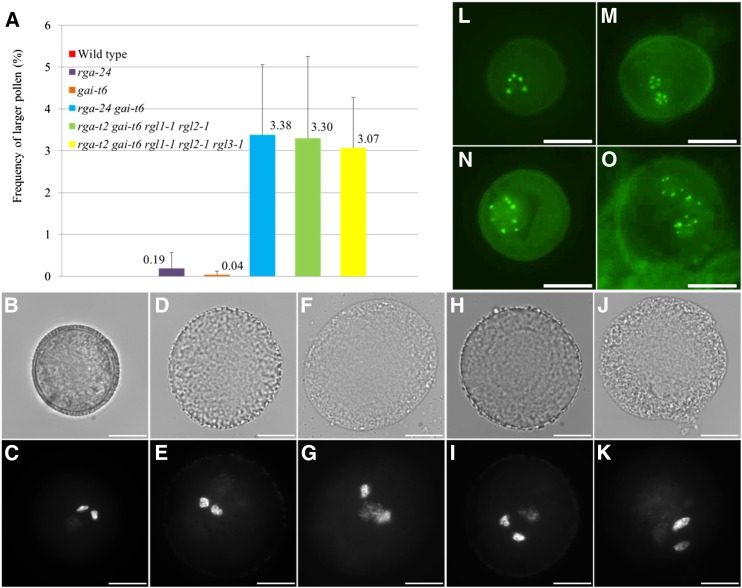Figure 2.
The DELLA double rga-24 gai-t6, quadruple rga-t2 gai-t6 rgl1-1 rgl2-1, and pentuple rga-t2 gai-t6 rgl1-1 rgl2-1 rgl3-1 mutants produce a subset of diploid pollen. A, Histogram showing the percentage of larger pollen grains produced in rga-24 and gai-t6 single and double mutants, rga-t2 gai-t6 rgl1-1 rgl2-1 quadruple mutant, and in the rga-t2 gai-t6 rgl1-1 rgl2-1 rgl3-1 pentuple mutant. B to K, DAPI staining of mature pollen grains isolated from wild-type Ler plants (B and C), the rga-24 gai-t6 double mutant (D–G), and the rga-t2 gai-t6 rgl1-1 rgl2-1 quadruple mutant (H–K). Unicellular microspores of control plants (L) and the rga-24 gai-t6 double mutant (M–O) harboring the pWOX2::CENH3-GFP reporter construct. Enlarged spores in the rga-24 gai-t6 double mutant either show 10 (M and N) or 15 (O) centromeric GFP foci. Enlarged GFP dots in picture N result from an overlay of two single GFP foci. Scale bars = 10 µm.

